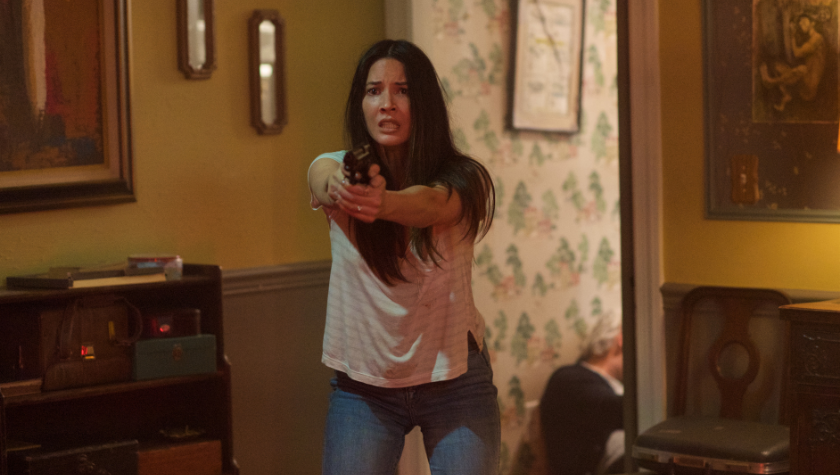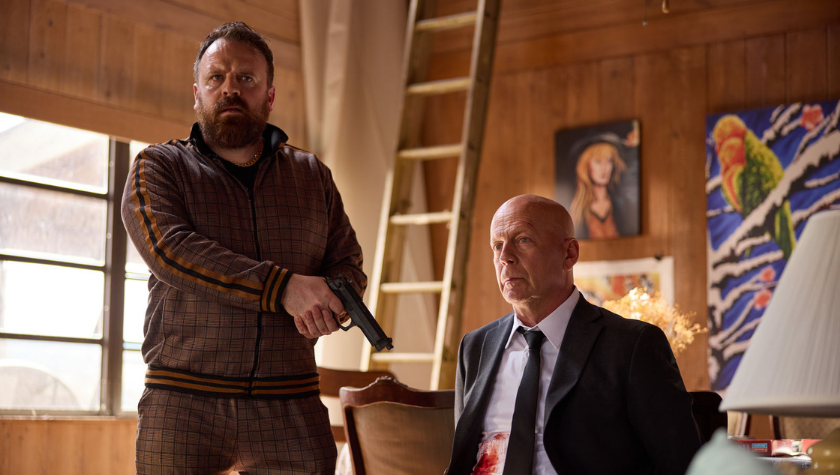The Virtuoso' looks into the paranoid world of an assassin for hire
April 30, 2021
Ideas come in a variety of ways. Sometimes it’s the lyrics of a song, an article you find online, or even a conversation you overhear. For director Nick Stagliano’s The Virtuoso, the idea came from an unlikely place — one of his previous films.
Good Day for It, Stagliano’s 2011 ticking-clock thriller, had a character who was a good man that everyone thought was a bad man.
“I always wondered if that guy walked into the diner and he was a bad person that no one knew,” Stagliano says, thinking about where the lead character of The Virtuoso originated from.
“A few years later I was talking with James Wolf [writer of The Virtuoso and co-writer of Good Day for It] and told him this concept.”
Stagliano pitched a character that’s so good at being an assassin for hire, but in a movie that’s not on the action-film level. Instead, it centers around a guy who goes to a town in which he’s the only bad guy around. Thus, this elevated thriller was born.
The Virtuoso is a mystery/thriller about a professional assassin who accepts a new assignment after having a crisis of conscience on his previous one. All he has is a clue, a location, and a time; and he must find his target before things go awry. The Virtuoso stars Anson Mount, Anthony Hopkins, and Abbie Cornish.
Writing the Story of The Virtuoso
Stagliano had three characters in mind respective of the classic drama: a tragic hero, a femme fatale, and a mentor or deus ex machina. Although bigger in scope and story than his previous film, nearly 80 percent of the movie still only takes place at a handful of locations. The economics were important to get the movie financed and filmed.
“Wolf is good at structure and he wrote the first draft,” Stagliano said.
Once he got the drafts he was happy with, he polished it as a director. Then he took it to executive producer Fred Fuchs, who recommended a few changes and additions. One important scene Fuchs suggested took place early in the film between the mentor (Hopkins) and the virtuoso (Mount), and is located in a cemetery. This scene was used to create depth in the story and characters while establishing the mentor relationship, taking it beyond a simple employer handing down another assignment.
But there’s a little more to this scene that a screenwriter can take away.
Stagliano wrote this scene specifically to entice a high-caliber actor. He notes, “I knew as a producer-writer that’s what good actors look for — one good scene. They can justify doing the whole movie if they can justify doing that one scene.”
There are many stages to creating the story of a movie and Stagliano insists that it’s not about writing, but rather editing.
“You get your first draft overwritten because you’re telling everything. The next person comes in, whether it’s a producer or the director and then actors, and you want their collaboration. The script evolves from the original draft."
A writer often has to make changes and compromises based on feedback. Stagliano recognizes that the idea may be yours, but without the others there’s no purpose in the project. As a pure writer, he recommends getting it all down, sending it to friends and people you respect, and listening to what they have to say.
Most importantly, Stagliano says, “Hold to your guns when you think something’s important.”
Using Voiceover
One of the most notable qualities of The Virtuoso is its use of voiceover throughout the film as a way to draw the audience into the assassin’s world. From the very beginning, the audience learns how this highly skilled killer views the world around him, what he notices, and how he operates.
“It was always part of it,” Stagliano said.
“James [Wolf] had it from the start. I grew up on classic film noir so that was part of the set-up.”
He references classic noir films like Double Indemnity and Sunset Blvd. as his inspiration for breaking the wall between the movie and the audience with a voiceover in second person.
This voiceover carries us on the journey of what seems to be an ordinary job, but the viewer quickly learns there is more to this particular job than realized.
The Final Rewrite
Getting through the script and then shooting with all the drafts and editing can be physically and emotionally draining. But then, now you’re in post.
“That’s bittersweet editing,” Stagliano commented, remembering that while editing the first cut of the movie he thought, “Wow, this wasn’t supposed to be a mini-series.”
The final edit involves making the hard decisions due to factors such as pace and runtimes. While it may not be seen during writing or shooting, Stagliano insists it all becomes more obvious as you go on what needs to go.
“Our first cut was 2:08 and through screenings and feedback we cut it down,” he said. (The runtime is 1:50.)
One of the scenes Stagliano cut was the aforementioned cemetery scene, which he admits could’ve lasted 14 minutes. It was the first thing they shot and Stagliano remembers how impressive it was working with Hopkins.
As a writer, this scene was a catalyst for getting Hopkins but as a filmmaker, Stagliano knew some of it had to go. Unfortunately, this wasn’t the only scene with the Oscar®-winning actor to have to go. Hopkins’ character kept coming in but they had to cut him out at parts because it was slowing the story down.
There are a few lessons writers can take away from these scenes and outcomes.
For instance, actors are thirsty for great scenes, even those with 60 years of experience. The famous “Royale with cheese” dialogue from Pulp Fiction is believed to be how Quentin Tarantino got Samuel L. Jackson for the role.
Another lesson is that you can write great scenes and have top talent perform them, but in the end some or all of it might end up on the infamous cutting room floor.
Writers eager to tell the next mystery/thriller can take away many lessons from the noir-inspired film, The Virtuoso.
*********
The Virtuoso is now available in select theaters and everywhere you rent movies; on Blu-ray and DVD May 4th.
Written by: Steven Hartman
Steven Hartman is an award-winning, optioned screenwriter. He was a Top 5 Finalist in Big Break’s Historical Category in 2019 and won Best Action/Adventure in Script Summit’s Screenplay Competition in 2021. He holds a Bachelor of Arts degree from Columbia College and had internships at Jerry Bruckheimer Films and Village Roadshow Pictures. Steve is a full-time writer and creative video producer by day and a screenwriter and novelist by night.



